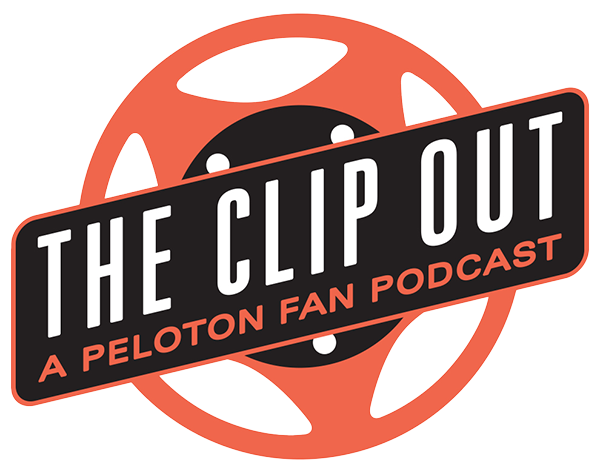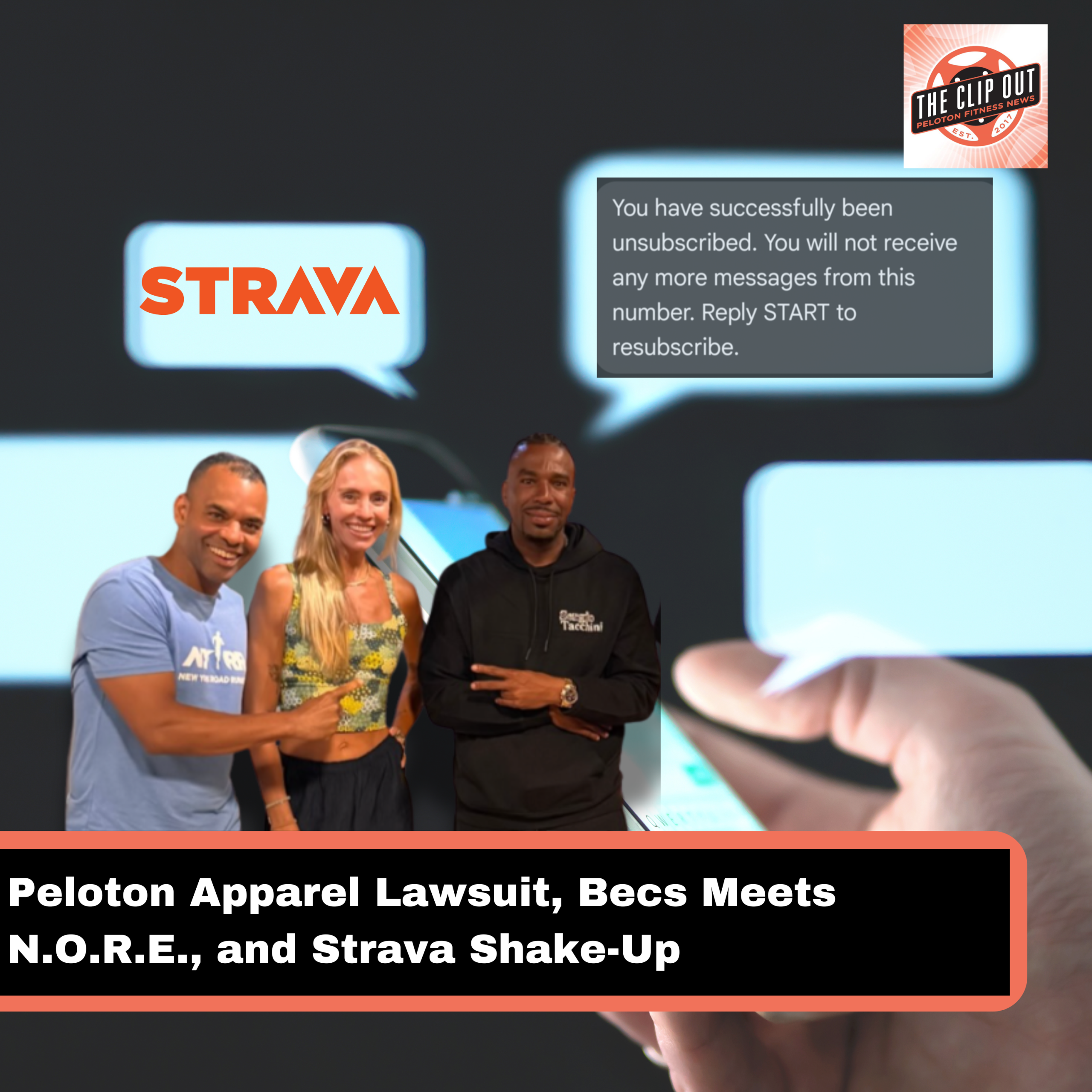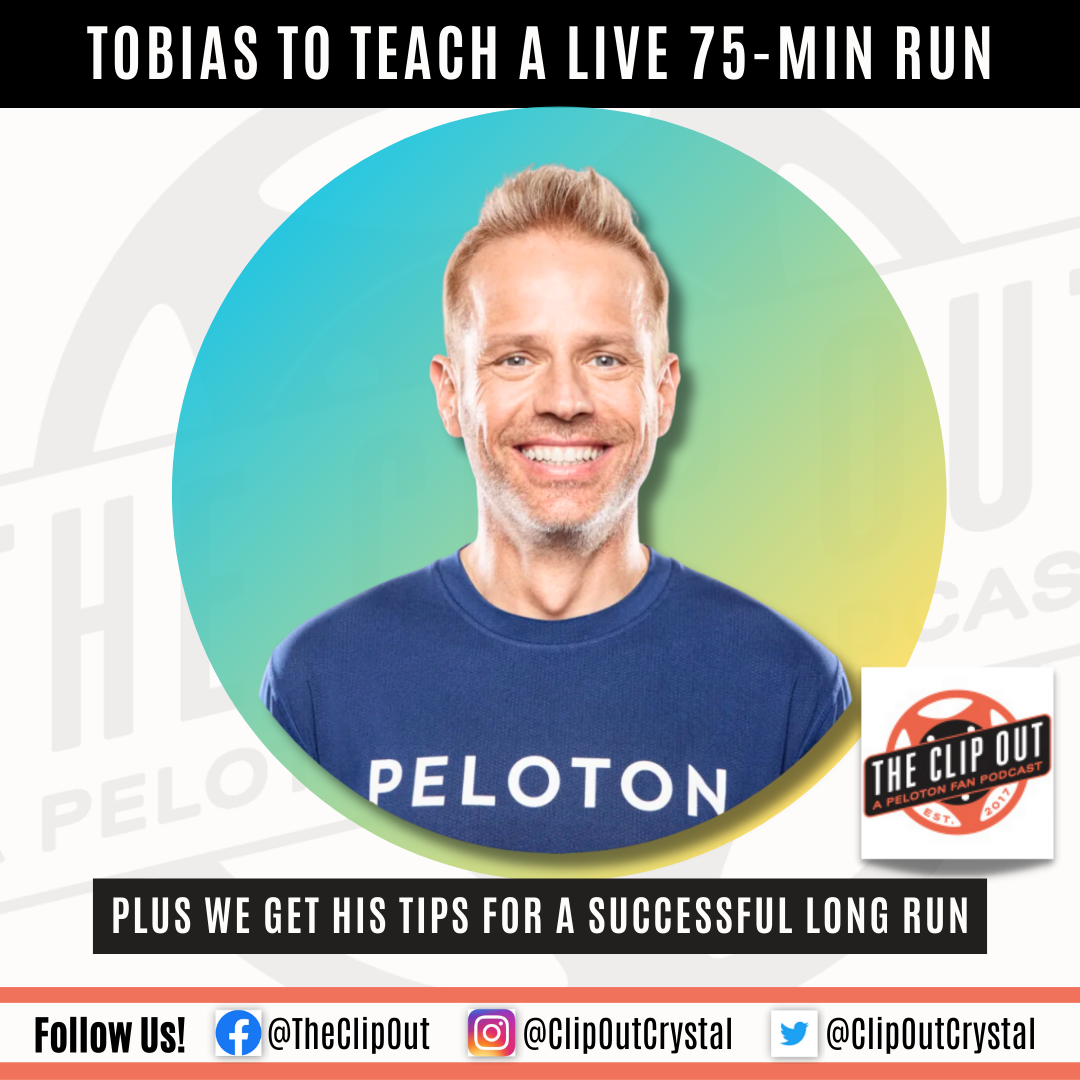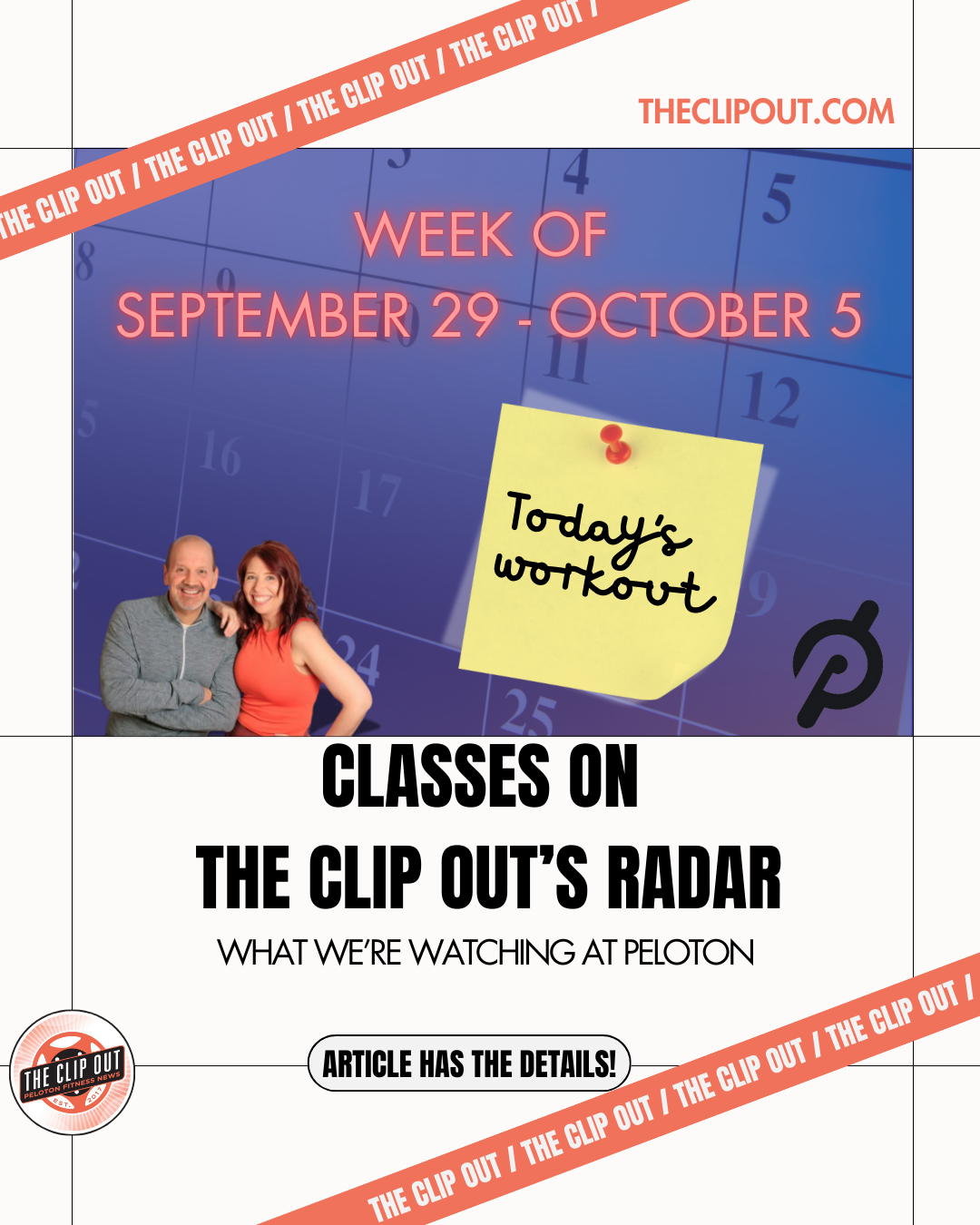Coach Tim Landicho Discusses Ascending Muscle Mountain
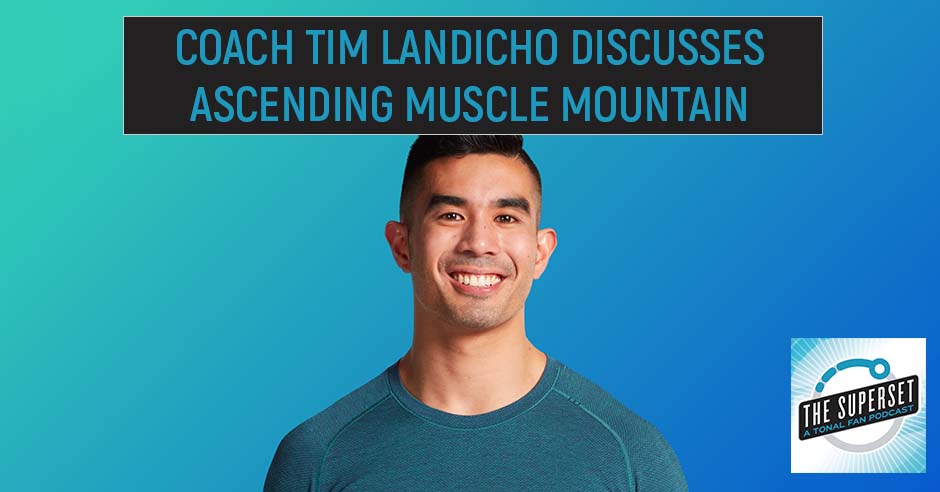
- Tonal hosted the first ever live in-studio Tonal Talk.
- Four-Week Fast Track draws large numbers.
- Pre-Game Prep drops.
- Tonal adds guest coach Rachel Hicks.
- New Content recap including Activate You Core, Yoga For Runners, and more!
All this plus our interview with Tim Landicho.
—
Watch the episode here
Listen to the podcast here
Coach Tim Landicho Discusses Ascending Muscle Mountain
It’s Episode 62.
We should probably start by saying that this episode is a little different because I’m not in the interview due to popular demand. I was traveling for work. The way the schedules worked out, I was on a plane.
There was no way to make that happen.
You’re flying solo.
I hope I did okay.
I’m sure you did. You’ve done interviews without me all the time on your MetPro Method Podcast. I have nothing but faith in you.
Thank you.
What pre-tell do you have in store for people in this episode?
We’re going to talk about the news of Tonal. There are some things that have gone on so we’re going to update everybody on the new content. The interview that we have for this episode is with Coach Tim Landicho. For those of you who are interested in or are already doing Ascending Muscle Mountain, maybe before we jump into that interview, we can talk a little bit about your thoughts about that as well, Tom.
I had gotten done doing a House of Volume again so I thought this would be “easy.” It is not as much volume as House of Volume, which makes sense because House of Volume says it’s the most volume. It is a lot more than I thought it was going to be having come off of House of Volume.
Tim talks about the best type of workouts to combine this with. He also talks about maybe some things that you might be training for you might want to stay away from this one. It’s super helpful for people to get an idea of what they’re in for. It’s Tim so it’s also a lot of fun. We got deep into the conversation.
I will have to listen. It’ll be new to me.
You’ll know if you’re doing Ascending Muscle Mountain right.
Yes, if I have ascended it properly. Before we get to all of that, shameless plugs. Don’t forget that we’re available on Apple Podcasts, YouTube, iHeart, and Spotify. Wherever you find a podcast is where you can find us. While you’re there, be sure to follow us so you never miss an episode. Maybe leave us a review. That is super helpful for the people who are coming along behind you, trying to figure out if we are worth their time or not.
You can also find us on Facebook at Facebook.com/SupersetPodcast. Don’t forget that you can watch all of these episodes over on YouTube at YouTube.com/TheClipOut, which is the name of our other show but everything lives in one place because it’s too many logins. We’re not that focused. At least, I’m not. Everyone knows that. There’s all that. Let’s dig in, shall we?
We shall.
Since we last spoke, Tonal hosted their first ever live in-studio Tonal Talk.
They took in the New York studio on February 1st, 2024. They celebrated the end of the Four-Week Fast Track Evolution Challenge so they had this whole panel. It was hosted by Coach Woody and included all 7 of the coaches and all 10 of the VIP Tonal community members. That was pretty exciting. For those of you who might have missed it, you could enter to win to be a VIP community member at the beginning of that challenge. They gave us some fun details about the Four-Week Fast Track that I was fascinated by.
They gave us some insight as to how many people were participating.
There were 25,810 members in January 2024 who took that Four-Week Fast Track. That’s crazy. Those are big numbers.
This is interesting where it says 16,566 in Level 1 or the beginner level. I wonder if that’s any indication perhaps as to how many Tonals were sold around Christmas time.
Maybe even the last third of the year. It’s by the time you get it and you get a chance to check it out and you’re starting over. I also think this applies to people who maybe haven’t worked out for a while. You’re grabbing those as well. This might have been a great program to pull people back in. If you can’t do the math or don’t feel like doing the math, that’s 9,244 people who were enrolled in Level 2, which was the intermediate/advanced. I found this part fascinating. It was 82 million pounds lifted in Level 1 and 148 million pounds lifted in Level 2. Given that there were almost double the amount of people in Level 1, that is fascinating.
It shows you the difference in progression. Not to shame the people in Level 1 but to show you if you stick with it, how much more weight you will lift.
You see it all the time too. You’re almost at 8 million pounds. On any day, you’re going to roll over to 8 million pounds. It took a long time to get to 1 million and a little less to get to 2 million but after that, it’s wild.
After 5 million, it feels like every two months I did another million pounds. It’s not quite that fast. It took forever to get to 1 million and slightly less than forever to get to 2 million and then 3 million. At some point, you hit critical mass, no pun intended. It is unusual at this point for me to do a workout that doesn’t do at least 20,000 pounds.
You had a workout because you just finished House of Volume. On your last workout of House of Volume, you went over 30,000 pounds in one workout. That’s incredible.
That’s the first time I’ve ever done that. I’m sure there are people reading who are like, “I do way more than that.”
It’s all relative. That’s what I find so fascinating about that because when I do 10,000 pounds in 1 workout, that’s like an intense workout for me. I’m only spending about 20 to 25 minutes a day in it and that’s about 3,500 pounds for me, which still is exhausting for me. I can’t even imagine that I did a tenth of what you did in one workout. That’s crazy because I’m spending 1/3 of the time.
When you do that math of how much more volume you’re lifting per workout on any program, that’s mind-boggling. It does put a very incredibly strong light on the consistency because you started using the Tonal after I did but also, I have had huge swaths of time that I haven’t even used the Tonal or I’ve been very focused on running or cardio.
That German Body Composition Training sounds simple but taxing. Share on XYou’re not using it not because you’re doing nothing but because you’re doing other things.
I always come back to it because I love it. I struggle to stay with it. I’m training for a marathon so it’s not in my best interest to be doing something like House of Volume even though there’s part of me that wants to be super competitive about it but that’s not where I am. You got to focus on your goal and that’s not where that would be for me. Your consistency in years of five times a week, at least working out, is showing at this point. The culmination of that is incredible.
As much as I still don’t enjoy working out, I also don’t want to lose ground so that is motivating me to continue.
It’s working. Going back to this Four-Week Fast Track, I thought that we should also mention that the average strength score increased by 2.39% in Level 1 and 1.28% in Level 2. That makes sense to me. I know that seems like the opposite but you have people who are beginning.
They’ve got a lot more room for improvement. For the people in the beginner level, if maybe you’re looking at how much more weight the people in the advanced or intermediate levels are lifting and feeling down on yourself, look at how much faster your strength score is increasing versus theirs. Even though you lift more weight and that’s cool to see, at this point, my strength score goes up a lot more slowly.
It also makes sense that you’re going to see a lot more return on your investment of strength when you’re first starting because there’s a lot more to gain. As you get better and better, there are smaller and smaller gains.
It’s like when you’re trying to lose weight. In that first month, you feel you’re dropping like crazy. Even though my strength score goes up slowly, I don’t know what’s going on lately. Every time I get done, my strength score adds 3 or 4 points. I’m like, “What the hell is going on?”
That is because you started working on your volume workouts. To me, that makes perfect sense because you started it. It always takes a six-month average and you’re entering that six-month window.
They’re dropping lesser.
When people see their strength score makes a major change after a workout that makes no sense, keep in mind that it’s the last six months it’s looking at. That can be very demotivating because since I did take a huge amount of time off, mine’s dropping, even though I’m working out every week. It’s looking at the last six months where I didn’t do as much so I have to watch my strength score drop. It all is relative though.
We should also talk about Pre-Game Prep.
Before Super Bowl Sunday, Tonal released a workout called Pre-Game Prep. It was a football-inspired HIIT session and was led by Joe, Woody, and Ackeem. It included a squat to press in the full-body burning touchdown block. I don’t know if you caught this on social media. I thought this was fun. Before the big game, Tonal also released the Strongest Cities Report.
Kansas City was football champions but the data showed that San Francisco earned the highest median overall strength score over Kansas City. Funny enough, Milwaukee led the way in the lower body strength score with San Francisco a close second. However, that does not matter because Kansas City still won. I act like I care. I don’t care at all.
As Tonal people, we’re supposed to root for Kansas City because Travis Kelce has a Tonal, which means Taylor Swift has probably at least walked by a Tonal.
Taylor Swift has been in the vicinity of a Tonal. We know that.
All of a sudden, if she starts getting jacked, she’s secretly using the Tonal.
She works out on Peloton too, Taylor Swift. I thought she did. I’m second-guessing myself.
How did she train for The Eras Tour?
She ran but I don’t recall if she ran on a Peloton treadmill. She sang her whole show while she was running. We had a guest who was one of Taylor Swift’s backup dancers. She uses Peloton, too. It’s cool to see how the ever little interworkings happen within the fitness world. That’s pretty neat and cool. I thought that was fun that Tonal had this whole game. They made it fun getting everybody involved in the Super Bowl, which is good because what do people do? They sit around and eat all day while they wait for the game. They sit around and eat while they watch the game. According to our son, he goes to Andy’s and has ice cream after the game.
Tonal has added a guest coach, Rachel Hicks.
This was fascinating. For those of you who don’t follow Peloton as closely as I do, you might know that Peloton and Lululemon came to a partnership, where Peloton is going to be providing all of the content for the Lululemon Studio, which means that some of the Lululemon Studio instructors no longer had a home. I don’t know when Rachel Hicks left. That could have been before all of that but she was available and Tonal hired her as a guest coach. That’s pretty fun. She’s also a Juilliard-trained actress and former gymnast. That’s fun, too.
As always, there are tons of new content and we will start with Quick Fit: Activate Your Core with Coach Ackeem Emmons.
I love this because it’s short and sweet. It’s all about the abs. You’re going to get your core worked from all different angles and you’re going to do a circuit of moves twice. First, you’re going to focus on the form. At the second time, you push the endurance.
You also have Sore Muscle Soother with Coach Shelby Hicks.
This is for those moments where you have sore muscles after a tough workout. This particular workout is going to help you loosen up those muscles. It’s slow-paced and full-body yoga. You’re going to gently move from pose to pose. It’s going to help you increase that circulation, which is a huge factor in reducing soreness.
Also from Shelby, we have Yoga for Runners.
I am a fan of that because there are very specific muscles that need to be stretched after running. You will be able to get to all of those in this yoga session. It’s going to lengthen the muscles in your calves, quads, glutes, and hip flexors, not to mention releasing the fascia, Achilles, and IT band. It’s very important.
There’s also a Post-Ski Stretch with Coach Ash Wilking.
For those of you who live near actual mountains and have real ski vacations, you can bounce back from a long day on the slopes with this full-body stretch routine. It’s going to decrease soreness in your back quads and hips.
Be mindful. Stay aware of your body and recovery. Share on XI was thinking, “You could travel,” but if you’re traveling, you’re not at your Tonal.
It’s body weight so you can do it on the Tonal app.
I take that back. There’s also the Pre-Game Pump with Coach Ackeem Emmons, Kendall Wood, and Joe Rodonis. This is what we talked about earlier.
In case I didn’t give enough explanation for it, it’s a bunch of plyometric moves and compound lifts. You’re going to also get a calorie-burning touchdown dance.
Here’s a little sneak preview of things to come and some upcoming programs. There’s Ultimate Arms with Coach Ackeem.
This is awesome because it is a hyper-targeted Four-Week Hypertrophy Program for your bis and tris. That’s coming very soon. It’s going to be launching on March 1st, 2024. I’m excited about that. That would be good for me to combine with my running as well.
I was thinking, “I wonder if I could do that,” but I don’t know that I want to do four weeks where I only do arms. That seems like I would be letting a lot of other things fall by the wayside.
I agree. You always need to get leg day in. It’s a four-week. It doesn’t say how many days a week so I could do one leg day on my rest days. I’ll not be in a program.
You could do one leg day and round things out with one full-body day. It’s perfect. I love it.
Maybe I will look into that.
We’ll have to see more about it when it releases.
Coming up, if you want some upper-body work but you want Tony Horton, you are in luck.
Tony Horton is going to be back in mid-March 2024. It’s going to be all about super sets, drop sets, and tri-sets to maximize that time under tension. It’s going to be focused on building your arms, back, and chest. It’s called Upper Body Inferno.
You could almost roll right in from one to the other if you want to get your guns ready for summer.
—
In this episode, joining us is Tim Landicho. Tim, thank you so much for being here.
Thank you so much for having me, Crystal.
I’m excited to talk about this new program you have going and catch up because I love to stay in touch and know what’s going on in the world of Tonal.
I’m super stoked to talk about this program and we’ll do all the catching up.
Let’s get to it. You’ve got this new program called Ascending Muscle Mountain. Tell us all the things.
The most condensed description that I can give of this is Ascending Muscle Mountain is a four-week Custom by Tonal program. As a sidebar, if anyone’s not familiar with what Custom by Tonal is, it is pretty much when you’re doing the workout, it gives you the feel of almost like you have a custom workout. It’s different from our smart linear format. With smart linear, the coach is doing it with you the whole time. It’s linear because the coach is moving with you from start to finish. Custom by Tonal gives you a little bit more of this feel where you can choose whether to see the demo or not.
The coach is there in the warm-up and cool-down, giving you, “Here’s a heads up for what you’re tackling. Here are the main things I want you to keep in mind.” The feel of it from an energy standpoint is a little bit more like, “Let’s have this pep talk. Here’s what I want you to know. Go crush it.” There’s going to be things that are dripped out throughout the workout. That’s what it is from a format standpoint. In terms of the actual program itself, it’s four weeks long. It is a German body composition training-inspired program.
If anyone’s not familiar with German body composition training, it’s a simple straightforward format. It’s a bunch of supersets where you are pairing an upper-body compound movement with a lower-body compound movement with very minimal rest between the two. The goal is that you accumulate a ton of work over the course of the workout. The minimal rest and alternating upper and lower allow you to keep working at this very elevated heart rate while managing your overall fatigue.
Let’s say, a bench press, and then I do a quick 30-second rest into a lower body compound. I’m making stuff up. There’s a squat. Probably, I was like, “Maybe I should give something from the actual workout but we’re here.” Let’s say I do that. It’s allowing my heart rate to stay elevated but because I’m doing lower body instead of upper body, my upper body gets this little break while my lower body is working but my heart rate is still staying elevated throughout.
You multiply that by the number of supersets throughout the workout. You can see how this work very quickly accumulates. One of the big benefits of this style of training is something that’s called peripheral heart action. It’s what I described where it’s the alternating back and forth between upper and lower directs blood flow from upper and lower, managing fatigue but keeping that heart rate elevated.
The other thing is that it causes lactate buildup which is a wave saying, “This is going to burn a lot.” That’s going to stimulate a higher level of human growth hormone release which creates a great environment for fat loss and body recomposition. That’s the nuts and bolts of Ascending Muscle Mountain. The last note that I’ll add is from a weekly standpoint, the workouts stay the same in terms of the exercises you’re doing. It’s very straightforward. I wanted this to be a minimal learning curve.
You learn things in the first week and then you’re not learning anything new. The main ways that you progress are by adding sets and volume each week. In week one, I would consider the main learning week. It’s like, “Here’s a simple format. Let’s get to work.” In weeks 2, 3, and 4 is like, “We’re doing the same thing but doing more work. Here’s an extra set.” In week three, “Here are extra sets.” In week four, “Here are extra sets, here, and here.” You’re increasing volume from week to week.
That’s why it’s Ascending Muscle Mountain because it keeps getting hard.
Your volume will be ascending over the course of four weeks.
If you're challenging yourself, there is no game changer like getting good sleep. Share on XOne of our readers and a long-term friend, Stacy Revere, started this program and she reached out to me with a specific question for you because she happened to know that I was interviewing you. I might have told her. She said, “How did you decide on German body composition training versus weight training method plus cardio like in 20-in-20 that’s going to have muscle gain but also get fat-burning results?” I would add to that. Also, versus metabolic weight training. How did you decide on that for this? What’s the thinking that goes into that?
I would consider German body composition to be a little bit under that metabolic umbrella mainly because of the high metabolic demand of the format. This is such a brilliant question because it shows me that you’re thinking about developing multiple qualities in your training like cardiovascular. That’s hypertrophy. I love this because it’s like, “I want to know what’s the difference.” One of the big things is that in German body composition training, the method itself, while it sounds simple, is pretty taxing.
If anyone’s not familiar with the term macrocycle, we’re thinking of those two aspects of the word macro so big picture and then cycle, like the cycle of your training. If we zoom out and look at the year length of your training and all the different programs and mezzo cycles or smaller cycles that happened within that year, German body composition training and the big proponents of it, Charles Poliquin is a big one.
He recommends not doing this and that frequently throughout the year in your macrocycle because it’s so taxing. The rest periods are so short within the workout. You’re moving and moving. Charles Poliqiun talks about how when you’re in a German body composition training program, it is crucial that you monitor your recovery practices, sleep, and nutrition. You’re eating enough calories and protein.
To bring this back to the question, I see this method as being very good once or maybe twice. If someone’s on their recovery practices, maybe they can swing in another time through the year but I see this as a very rare opportunity in your macrocycle to push the gas pedal and be very time efficient with it. This might be great for the intermediate to advanced user who has good movement proficiency but maybe doesn’t have a ton of time.
Let’s go back to the whole strength training and cardio separately. To me, that’s something that I do in my training as my standard. I have my stuff on Tonal. I’ll have my more traditional strength training stuff. Depending on where I’m in my year, I’m going on a run or throwing a circuit together. That, to me, is a little bit more meat and potatoes. If we’re being honest, I like that. It’s a lot more sustainable but the trade-off there is that there’s a little bit more time required.
When I’m thinking of the overall intensity of that combined strategy, it is a little more sustainable than German body composition training. If somebody is doing German body comp training, that’s separate. Have your strength training program and have a separate conditioning and cardio thing. That separation is not required when you’re doing this four-week thing because it is such a highly metabolic demanding way of training.
Ascending Muscle Mountain is four days per week program. There’s one day in the week that’s dedicated to cardio and core. That’s complimenting this stuff. If somebody’s doing German body composition training, they don’t need to do their separate cardio stuff in addition to this. If this is someone’s first time doing German body composition training, I would recommend that they stick with this program, at least for this first go around to see, “How is my body adapting to this style of training?” It’s demanding.
To boil it down, the big trade-off is the intensity and efficiency of it. It’s way more efficient but because it is so intense, this doesn’t sound great but as long as I preface it within your macrocycle, we’re not doing it very often. As a training method, it’s not the most sustainable type, which is why I like to give the nuance that this is for the more intermediate and advanced user. It’s for someone who’s looking to push themselves. When you’re pushing at your edge for this short sprint of time, you’re going to gather a lot of learnings about yourself, your stress response, your recovery, and what you can do within a four-week program.
I’m going to run a marathon in 2024. I’m running a lot. That may not be a good program for my training cycle because I’m already getting so much cardio. It depends on each person but that’s one of the examples I was hearing. Am I interpreting that correctly?
That’s a great example. I love the nuance there. It depends on where you are in your marathon training. The closer you get to your marathon training, the more I’m probably going to be like, “I’m steer clear from this.” Running is going to be your bread and butter. Strength training is meant to complement that. We have these people in our community and it is important to speak to those folks who love it, even if it’s not for the cardio effect. Maybe they like to run or bike for mental health.
Let’s say there is someone like that in our community who’s reading, which I’m sure there are. They’re like, “I want to see where I can go with this German body composition training. I want to keep this activity that I love. Not necessarily for the training effect, maybe more so for enjoyment. I don’t want to compromise both.” I hear that. I have things like that myself too where I’m like, “From a training standpoint, it’s not the most optimal but I like this. Can I do it?” If there’s anyone reading like that, there’s a way that you could work around this.
Be mindful and stay aware of your body and recovery. If you make the cardio stuff a little more zone 2-centric, it’s going to put you more in a recovery place versus pushing a higher zone or a higher heart rate zone, where the recovery demands are going to be a little higher. What I want you to be thinking of is your overall week’s stress demands. If you’re going to do anything on top of this, I would rather have it be on the side of lower intensity facilitating recovery from this tough program rather than adding more for you to recover from because that’ll dig a deeper recovery hole for you.
I’m putting myself in this position and thinking, “If I was doing zone 2 all week and heart rate training, this would probably be okay but if I’m doing sprints and trying to work on my interval training, maybe that’s not such a good idea with this particular program.” That was a great explanation. You talked a lot about how you’re pushing limits in this program and this is for people to figure out where that edge is. What tools do you use to get comfortable with being uncomfortable?
Let’s break this down into a couple of categories, especially with the more intermediate-advanced users because that’s the person I’m speaking to in this program. With that person, maybe even more so than a beginner, I would encourage this categorical thinking. If we zoom out on a larger picture scale, when you’re going into an intense program, it’s important for you to have a repeatable system in terms of your recovery. A repeatable system means that you’re not a beginner anymore. You’re not throwing random stuff at the wall and saying, “Maybe I shouldn’t go out on this night.”
This is more like you’re consistent with your training. That’s already a given. I’m not coaxing you into consistency. How can we rinse and repeat things that are baked into our lives that we can rely on to be like, “I can show up to my training consistently and still be able to push hard and know that I’m staying well within my limits while exploring that edge?” The first category I would break this down to is the basic physical bucket.
In terms of tools, I’m making sure that I’m eating enough calories. If you’re someone who is aiming to be in a calorie deficit, this is tricky because I can’t give individualized advice over a show. If you’re in a calorie deficit, this is a fun balance to strike. I would encourage you to stay at the highest calorie level possible while still being in a deficit. That’s the best of both worlds. How fueled can I be while in a deficit because you will need all of that fuel to be pouring back into your body?
Be keeping protein intake high. The sleep in the stress management piece is going to be huge for this. This was largely inspired by a program that I did in 2019. In hindsight of all the training I’ve done, this is probably the toughest training that I’ve done. Granted, that program I did was a sixteen-week one. If you think of 4 of these Ascending Muscle Mountains and 4 of them that built off of each other back-to-back, it was such a high level of accountability in terms of sleep. That’s the most obvious one.
You’re aiming for 7 to 8 hours. The stress management piece on top of sleep is going to be a huge one. This intermediate-advanced level is where you’re going to see, “The nuances in how I manage my stress is going to be huge here. Do I have practices built?” That doesn’t have to look the same for everyone. Is that a meditation practice? Is that a breathwork practice? Even if it’s not those things, it’s like taking a ten-minute nap somewhere in your day. Even if that’s sitting in your car and closing your eyes for ten minutes, it’s at this level.
We’re speaking to someone who is not struggling with consistency anymore. You’re already there and so because of that, this is where we start to see the nuance of stress is going to build up, not just in terms of the training program but also in terms of your everyday life stresses. It all adds into the same bucket. How can we add these frequent clearings of those stresses so that we can keep adding room to that bucket that our training can pour into that bucket? Hopefully, that makes sense from a purely physical standpoint.
Some of that is obvious but that’s the basic stuff that cannot be overstated, especially with a program like this. If we move on to the emotional mental bucket, we can create a little combined bucket here. This very much ties into the physical stuff. For me, anytime. I’m in this stage with my training outside of what I teach on Tonal. I’m talking about my physical goal. I’m at this place in my training. I experienced this in this program that I did in 2019 where I started to see, “If I’m not setting clear boundaries in my relationships and not being clearer about what my yeses and my noes are in terms of commitments, this is all going to come back to the stress management piece.”
I’m going out with friends. I’m having a core group of friends in New York City. We’re all super busy, this young professional bucket. We’re having dinner and then going out after. I always value that type of thing. I’m like, “We haven’t all gotten together in three months. I’m super stoked for this.” I’m also entering into it with a little bit of a mindset of, “What are my negotiables and non-negotiables here? Am I setting a drinking limit for myself? Am I setting a time that I’m going to go home?”
I’m looking at over the course of my year. Where do I tend to push and pull a little bit in terms of these boundaries even in terms of stepping outside of training whether that’s going out or relationships? I can definitively tell you that in the summer, I’m athletic but a party man, which is my brand. I adjusted my training a little bit. I’m still training. I’m going out more. It’s summer. It’s pride month. I’m going on vacation. I adjust my training accordingly.
I’m ramping up that dial a bit. I am being a lot clear about what I value about this thing that I’m going to do. I value quality time and getting out of my normal routine a little bit but what parameters am I also setting for myself to make sure that I’m staying on track with my goals? Another one that I would say with the emotional and physical bucket is huge for me. It’s staying aware. Maybe this goes with the meditation piece. I’ve been a big meditator. I’ve meditated for several years pretty consistently. For me, there is that level of awareness on all fronts so physical awareness, what’s happening in my body, emotional awareness, and mental awareness.
One of the things that happens, people don’t clock this initially. At the beginning of their fitness journey, they’re like, “This is a physical thing I’m doing.” Consider the fact of all stress in the body. As someone gets into this intermediate-advanced state, something that a lot of people don’t consider is, “This might have an impact on my mood. I’m pushing the limits of my stress response a little bit, what am I noticing about my body when I get to these states? Do I tend to be a little bit more irritable? Am I noticing that winding down for sleep is harder because my stress response is ramped up?”
These are things for me that in the emotional and mental buckets still very much connect to the physical because it’s all connected. It’s your nervous system that’s governing all of this so to me, it’s staying aware. When I did this program in 2019, the sixteen-week one, I kept a journal for myself. There’s still value, even though Tonal tracks your volume metrics, power metrics, and range of motion. I still think there’s value in keeping a journal where you can track more qualitative things. “How’s my quality of sleep? How’s my patience at work?”
For you to be able to track that stuff, if this is your first go around with this level of intense training, it’s also a great thing to take to other advanced programs that you do. We’re getting into the realm of you’re building a body of data for yourself. “How does my body tend to respond? How do my mental state and emotional state tend to respond when the stress level starts to build a little bit? That’s going to inform me so that I can be smarter about it in the future.” Hopefully, that makes sense. At this stage, we’re playing a different ball game than someone who’s getting consistent for the first time. We’re at a point for this type of user where we do have to be a lot more mindful about this stuff.
I think about myself. You start a program like this and think, “Calendar’s clear. I have my parameters in place.” You think you’re ready and then life throws a curveball because life will. It’s interesting because there is this part where you have to look inward and figure out how to push through. It is so easy to be like, “I need to dial this workout back. I don’t have time for this because of X, Y, and Z happening in my life.”
That’s where all of the things you talked about are so important. That’s where you can look at how can I keep getting my goals but still do all the obligations in life that I need to. If you’re not aware and not paying attention to all the things you talked about, it’s so easy to feel like you’re doing something wrong. You’re not doing a good enough job. You’re a failure. That’s not the case. It’s supposed to be hard and that’s why you’re having a hard time. When you throw life in, you never know what’s going to happen.
Frequent clearing of the stresses will add room to the bucket for our training to pour into. Share on XIt’s such an important point you bring up. You got me going. We think of training again. Let’s zoom out and make this macro level. My goal for myself, everyone I care about, everyone on Tonal, and all humans is I want you to be training for the rest of your life. Not because it’s punishment. If we think of training like it’s brushing your teeth, it’s an act of self-care. I’m taking a shower at the end of the day.
It’s a thing that you will do. I hope you’re brushing your teeth and showering for the rest of your life. It’s the same thing. I hope you’re training for the rest of your life. When we look at that big picture view and it’s like, “I want to be training until my old age,” then we can break it down into seasons and understand there are going to be seasons where life takes precedence.
Maybe I am taking care of a parent a little more and maybe there are intense demands on my time. Maybe I have a young kid. Maybe I’m working an extra side hustle. Whatever that is, there might be seasons I’m familiar with coming to Tonal and coming through the pandemic. There were some weeks where I was working 70 hours per week between building my business and still being in the gym.
There are some seasons where your training skills are back. It doesn’t mean you stop training but there are seasons like that where I look back and I’m like, “My training is not exactly where I would love for it to be. There’s stuff that needs to get done but I’m still going to train. I’m committed to still training. How do I adjust the training accordingly?” That’s one season we have in our life in this grand scheme of things.
The other one is that there are seasons. It’s time to freaking push. That’s where I am and where I was in 2019. The reason why I keep bringing the awareness piece back is it is so important, especially at the intermediate-advanced level. Consistency is a level one thing. We’re not talking about getting consistent anymore. How do I manage everything while being consistent? To me, there is this important element of coming back to your values like, “What’s important to me in this season of my life?”
Between you and me, Crystal, in this particular season with my training, I’ve decided that my fitness goals are more important than other things. My priority is going to be different in the summer but going out, I’m going to enjoy and be fully present in this quality time with my friends but I’ve decided, “I’m not going to turn up as hard as I would like in the summer.” There are other things too that I’m saying no to.
What you’re saying is so crucial with a program like this. When you’re choosing to put yourself on the hook to do something that’s at your edge, it’s reevaluating, “What are my other values? What are my other priorities? What game of trade-offs am I going to play?” It doesn’t have to be forever. It could be for this sprint but what game of trade-offs am I willing to play? How do I stay aware of that as I go?
I would like to hear more about what you’re working on. What habits are you trying to create? Where are your goals going? I heard that you’re on a big weight gain journey. Is that correct?
A little bit. For anyone reading, not in the know where Crystal heard that. We did this very special Facebook Live from the Tonal studio. Woody asked me. She was the one who moderated and we had some Tonal members who were in there as guests. It’s super fun. I had the vibe of a TV talk show. Woody did a phenomenal job and she asked me that question. My goal is very simple. It’s to build more muscle.
Since July and August 2023, I have put on roughly 6 pounds. I’m pleased with that. My training is geared towards hypertrophy. There’s still a performance focus because I need to perform for my jobs. I’m still thinking of things like staying conditioned enough, staying mobile enough, moving well, and feeling good but the parameters around the training are very hypertrophy-focused.
From a training standpoint, it’s very simple. I’m loving it. How I feel about my training is this is the most fun I’ve had training in a long time and I’ve been training for a minute. I’m pretty stoked about where things are at. As far as outside of training, my focus is I’m trying to simplify. It’s pretty simple. It’s sleep. I’m working on my sleep game because if you know you know.
If you’re challenging yourself, there is no game-changer like getting good sleep. It’s everything from what my sleep routines are, understanding how my energy flows throughout the day, and understanding how I make it so that I’m not buzzing with energy by the end. If I am, how do I take myself down to get to bed at a good time? It’s some of those stress management practices I described.
For me, that’s the big one. Sleep has always been tough for me. I’m dedicating the entirety of 2024 to tackling that one thing but there are so many facets to that one thing. There’s the time management piece, choosing my priorities, and getting my sleep environment. There are so many pieces to it so it’s not like, “Here’s a three-week habit and I’m going to tackle it.” I’m like, “No. 2024 is the year that we nail our sleep.” That’s where I’m at.
I’m curious because 6 pounds in that short of time is a lot. For people who have not ever had to specifically gain muscle, that may not seem like a lot but it is a tremendous amount. What does a typical day of eating look like? Understanding that anybody who’s reading is not necessarily going to affect you. You can’t necessarily follow the same program. I’m curious because I feel like it’s probably a lot of food.
Let’s break down my profile. If I was my case study or client, I’m looking at this guy and I’m like, “He’s a young active guy who lives in New York City. He walks a ton. His job requires him to move a lot. On top of that, he’s training and he wants to put on weight. Let’s get some effing’ food in this guy.” First off, I do make protein. I’m going to sound like a broken record by the end of this. You’re going to hear, “Get your protein targets.” To me, that is the staple of everything. You could be in a caloric surplus or hitting the calorie number that’s necessary for you to gain weight.
If you’re not prioritizing protein as the centerpiece of that, we’re questioning, “What’s the quality and composition of that weight gain? How much of that is going to be muscle mass and fat?” Protein is the centerpiece for me. I’ve tracked macros pretty extensively in the past. I have experienced doing that but I’m going to be honest, there’s so much happening in life that, for me, the thought of weighing and measuring feels like a freaking chore.
I’m like, “If I do that, I know that I’m going to have a sour relationship with food. I’m going to resent this whole process.” Thankfully, the thing with experience is you understand patterns better. If we take the protein piece, and I’m hovering at around an average of 185 to 186 pounds, with my protein goals, I’m aiming for roughly 175 to 200 grams of protein per day.
For me, without having to weigh and measure stuff, I use this hand portion. I eyeball hand portions. Serving a protein, whether that is chicken thigh or ground beef, a palm-sized portion for me is going to be roughly 20 to 30 grams. If we average that to 25, we zoom out to the total protein grams goal of 175 to 200. I’m looking at 7 to 8 servings of those palm-size portions throughout my day.
When I think about it that way, it becomes less overwhelming. From a number standpoint, somebody might be like, “That’s a lot.” From logistics, planning, and creating a system standpoint for my nutrition, it simplifies it. What I’m thinking of is taking this spread of eight palms of protein that could also be a scoop of protein powder and a couple of eggs. I’m checking the box like, “Did I get eight of these throughout my day?”
I’m spreading that out throughout my day. Breakfast is usually 3 and dinner is usually 2. I’ll have a shake or a snack in the middle of the day. That’s maybe another 1 or 2. In the evening, I’ll have a shake before bed. I can look at that and I’m not overwhelmed talking about that. I’m like, “I got my protein bases covered.” The rest of that is filling out the rest of my calorie goals with carbs and fat.
I’m at a 1 to 3 ratio of how much protein I have and how much carb-fat combo I have. I’m aiming for between 3 to 4 combined carbs and fat. If I’m having a serving of protein, I’m aiming to have between the carbs and fat combined, 3 to 4. If that’s a larger meal I’m having breakfast with three servings of protein. That means that I’m having 3 to 4 times as many carbs and fat. That’s a lot of rice.
Usually, for my breakfast, I’ll have six eggs and a palm-sized portion of ground beef with chicken sausage. That’s about three palm-sized servings of protein right there. I’ll have that with bell pepper and kale. I’ll have that with a ton of rice, a glass of orange juice, and probably a bagel. I’m usually telling the carbs and fat portions that I’m building. I’m like, “There’s a lot of food but we got some goals. We’re going to hit them.”
That’s why people can’t look at what you’re eating and assume that’s how much they need to eat because we’re all in different areas of our lives, men and women of different sizes and everything. That is probably the amount of food I eat all day.
I’m aware that my breakfast is probably a small child would be like, “I would not eat that in a whole day.”
There’s nothing wrong with that. That’s where we’re all different. I say that to drive home that works for you and your goals but every single person is different and I want to point that out. We got off track because I wanted to hear more about you but I also wanted to make sure before we wrap up, is there anything else about Ascending Muscle Mountain that we haven’t covered that you want to make sure people know about?
We’ve covered the logistics of it, what is it about and what are the nuts and bolts. We’ve covered the purpose and strategies for how to manage. I love that question. What are your tools for managing while at your edge? We covered all that. The last piece that I would add here is we talked about the physiological purpose. For me, it’s a lot of the personal story and the why that I’m bringing to this. I want to share this because I do think that this is important for someone to connect with. Maybe someone is in this place themselves.
When I think of any time that I’ve done training that has pushed me to my edge, yes to the body composition changes, gaining muscle or burning fat, or having a faster metabolism. Yes to all that fun stuff. To me, the bigger purpose of this is there is nothing that builds your self-trust quite like repeatedly going to your edge, learning to manage your mental state when you’re there, learning to manage the internal conversations that happen when you’re there, and learning to manage outside of the training in your day-to-day life.
We talked about boundary setting and coming back to your values. If we took all of that and put a nice bow on it, that’s building a relationship and trust with yourself, and the solid sense of, “I got me.” When I think about the macro level of what I do as a trainer, it’s to help people get in shape and hit their physical goals but I see all of this as a way of ultimately developing this deep sense in humans of, “I can face challenging things and not crumble underneath it. I can face challenging stuff that might be hard and uncomfortable but I trust myself. This might be at the edge of my limit but I trust myself to get through it.”
That’s the mindset and the internal state that I want someone to develop that I believe carries way beyond what you do at your Tonal with your training and what you take with you in your day-to-day life. I talk a lot about how training is a tool for helping you live your best life. I want you to be able to move pain-free for as long as possible, be mobile into your old age, and meet the demands that life throws at you. This is part of that.
Nothing builds your trust like repeatedly going to your edge, learning to manage your mental state when you're there, the internal conversations that happen when you're there, and outside of the training in your day-to-day life. Share on XI’ll close it with this. One of my favorite books helped me that same year when I did that sixteen-week program I talked to you about. That year, I was struggling with a number of things. I made a series of choices that in hindsight were not great. It left me with this financially scarce energy. Anxiety was very high. I do credit that time for getting me started with an online fitness business because I was like, “I need another revenue stream,” which led to me being at Tonal. That worked out but there were a number of things there.
I read this book. A mentor put this book on my radar at the time. It’s called The Upside of Stress, a transformative book. When I did my first month-long challenge with the Tonal community challenge, I gave this as an optional reading because it was in line with a lot of what we were talking about. It was mental health awareness month. I was like, “If you’re looking for an extra resource, read this book. It’s called The Upside of Stress.”
The biggest thing that stuck with me from that book is she describes two different mindsets. First, her thesis is, “As a society, we’re conditioned to think that stress in and of itself is a bad thing.” My thesis is that it’s not. Stress is a necessary thing for humans. It’s more so the way we relate to stress that determines its impact on us. If I’m perceiving, my perception of something can shape how it impacts me on a physiological level.
She breaks down these two responses. She calls it the threat response and the challenge response. The threat response encapsulates the state of mind where you’re looking at a challenge and you’re like, “This is too much. I’m going to get consumed by this.” If you were to put it in evolutionary animalistic terms, it’s the mindset of prey that’s about to be eaten. We’re going to put body language to it. It’s like, “This cowering in fear, I’m screwed.” That’s a threat response. “I’m under threat and I’m screwed.”
The other response she gives is the challenge response. The funny image that comes to mind is one of my favorite movies of all time, which is Space Jam. If you have not watched Space Jam, you need to watch it. It’s the OG version from the ‘90s. In the end, Michael Jordan is facing down all these aliens who look like they’re on steroids. They’re five times his size.
Michael Jordan is standing there calmly and firmly. His hands are on his hips. He’s staring up. He’s in this ready-to-go stance. He’s assessing the competition but there’s no sense of cowering and fear. To me, that’s the perfect encapsulation of a challenge-response A challenge-response says, “There are scary things in front of me. There are things that I maybe haven’t handled before. I have the resources and capabilities to rise to the challenge. I might not be someone yet as of this moment who can rise to the challenge but I can become someone who rises to the challenge.”
There’s this sense of growth mindset in there. There’s this sense of, “I am not done. I’m not screwed.” When she talks about the threat response and the challenge response, she talks about how in a threat response your body will change accordingly. Your blood pressure will be higher because your body is preparing to form blood clots and in the face of like, “If I get damaged to my body, we need to clot ASAP.” That’s going to change what our blood pressure is like.
She gives a very clear example of how that perception influences your physiology versus a challenge-response energizes you and puts you in a position to think more effectively. I’ll close out with this. The reason why I love a program that pushes you to your edge in a controlled environment where you very much have a say over your process is I ultimately see this as you building a challenge-response that you can take to the stuff outside of training and fitness that you encounter in your everyday life.
To me, that is the crux of building powerful and high-performance humans, and humans who are ready to create their best life, are ready to take the obstacles in front of them, and say, “Not only is this in my way but I’m going to use this to my advantage to create the life of my dreams.” That’s why a program like this is so powerful. I’ll leave with that.
Let’s go kill something and tackle some challenges. Tim got me pumped up. That was awesome. Before we let you go, where can people find you if they have questions or want to follow along with your journey?
Tonal. You can go to the Explore tab and go to Coaches. You can find me there. You’ll find my workouts and programs. You can also find me on Instagram. My Instagram is @TimLandicho. It’s very straightforward. I do think 2024 is where I started to go cross-platform. As those things appear, I will let you know but Instagram is the main place. Find me there and say hi.
Thank you so much.
—
That brings this episode to a close. Where can people find you?
People can find me on Facebook at Facebook.com/CrystalDOKeefe, on all the socials, and the Tonal leaderboard, @ClipOutCrystal.
You can find me on Twitter @RogerQBert or Facebook at Facebook.com/TomOKeefe. You can find the show online at Facebook.com/SupersetPodcast. Don’t forget that you can watch all of these over on YouTube. That’s it for this one. Thanks for reading. Until next time. Keep lifting.
Important Links
- Tim Landicho – Instagram
- Apple Podcasts – The Superset
- YouTube – The Superset
- iHeart – The Superset
- Spotify – The Superset
- Facebook.com/SupersetPodcast
- YouTube.com/TheClipOut
- Charles Poliquin
- The Upside of Stress
- Tonal
- Facebook.com/CrystalDOKeefe
- @RogerQBert – Twitter
- Facebook.com/TomOKeefe
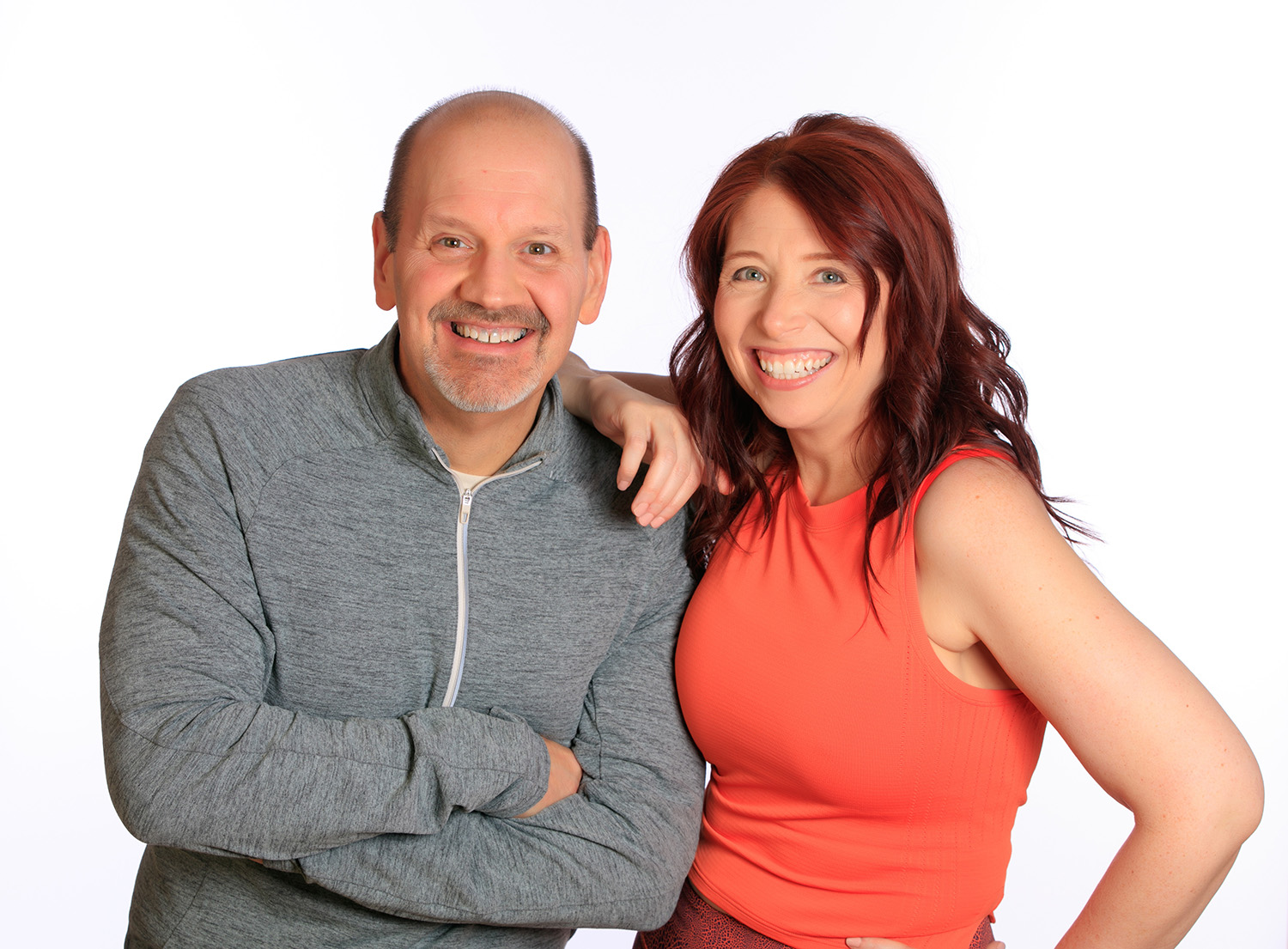
Subscribe
Keep up with all the Peloton news!
